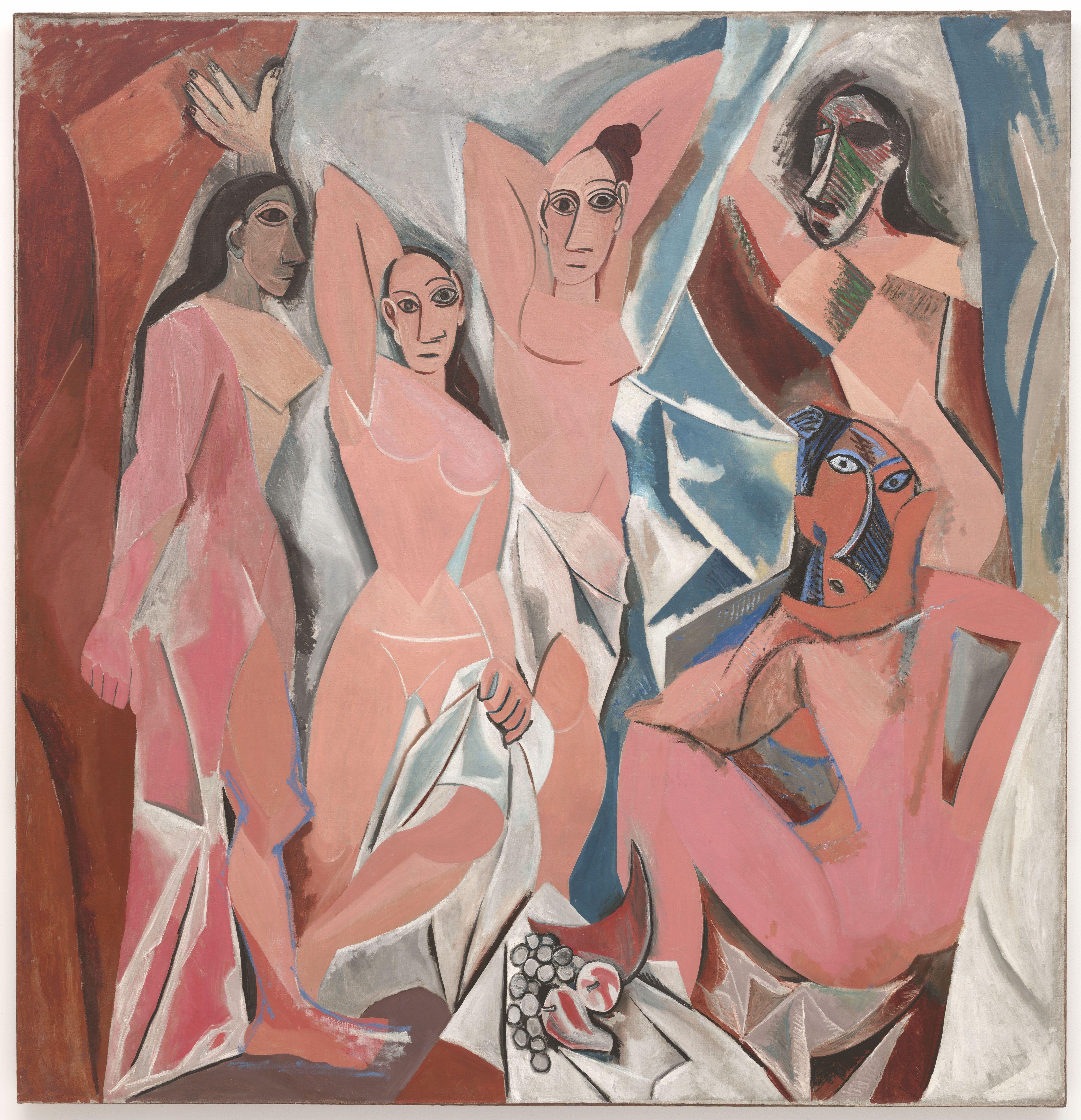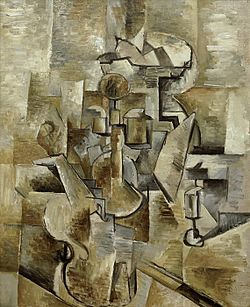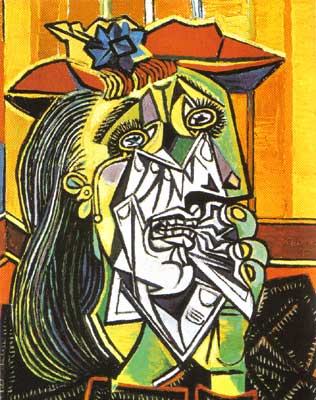- Cubism was a 20th Century avant-grade art movement first developed in 1908 by Pablo Picasso and George Braque. They worked closely together until the outbreak of World War 1 in 1914. The term 'cubism' was first used by art critic Louis Vauxcelles after seeing a piece of artwork by Braque. He described it as 'little cubes' after which the term was gained worldwide use into the world of art, however Picasso and Braque did not immediately adopt the term.
- George Braque, Pablo Picasso and Paul Cezanne were among the key leading artists to have revolutionised cubism in all of it's glory.
- It fragmented the subject matter into it's component parts, using geometric shapes and created new and interesting abstract forms. Rather than depict the object from one viewpoint, the artist would depict the subject from multiple angles with random intersecting surfaces and a lack of a coherent sense of depth. The spaces and shapes can be ambiguous leaving it to the observer's imagination.
- Although it has been widely debated over the years, many people have considered Picasso's own picture, "Les Demoiselles d'Avignon" (1907) was the first ever piece of cubist artwork ever created. Here is a picture for reference.
 |
| Les Demoiselles d'Avignon, 1907 by Pablo Picasso |
6. The first type of cubism was "Analytic Cubism" which broke down objects into its composing parts or facets that were then analysed and reassembled into an abstract work. This meant that the artist, rather than depicting an item from one viewpoint, depicted it from several viewpoints at once.
 |
| Violin and Candlestick, 1910 by George Braque |

8. Here are two examples of cubist portraits.
 |
| Femme en Pleurs (Weeping Woman), 1937 by Pablo Picasso |
 |
| Girl Before a Mirror, 1932 by Pablo Picasso |
9. Here is my drawing of an African mask, which was one of the key influences in creating the cubist movement to begin with.
I had drawn this picture using a 3B pencil from my pencil case. As you can see I had drawn in a lot of detail with this picture, (especially the shading) and I'am actually proud with how this picture came out. Now here is the photograph that I had used as a reference.
I had to make a quick Google images search to look for this image, and to be honest, this is my second time drawing a picture based on this image. I had previously drawn another image using this image for my case study, but I had unfortunately lost that picture. So now I had drawn another picture using the same image, and second time around, the drawing turned out really well, which was what I had said previously up above.
So now that was my case study on Cubism, I hope you all enjoy it, and I will see you all in the next blog post. See you all until then, bye!


No comments:
Post a Comment